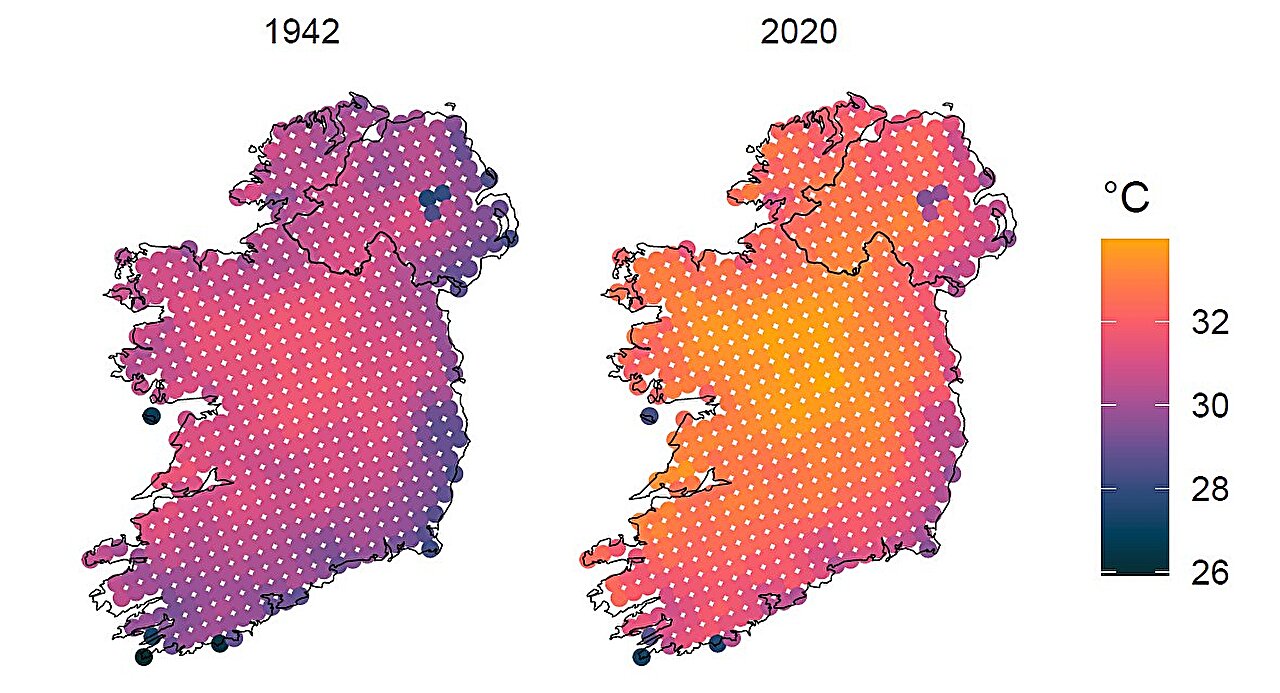A temperature event of 33 degrees Celsius in Dublin’s Phoenix Park has gone from being a 1 in 180-year event in 1942 to a 1 in 9-year event in 2020, according to a study led by Ireland’s Maynooth University.
The study, which developed a new model to predict the frequency, magnitude and spatial extent of extreme summer temperature events in Ireland, also estimates that a temperature of more than 34 degrees Celsius—a value not yet recorded in Ireland—changed from a 1 in 1,600-year event to a 1 in 28-year event between 1942 and 2020.
According to Prof Parnell, “We are often focused on average changes, and particularly focus on the Paris Climate Agreement of 1.5 degrees Celsius. What we have shown here is that the changes in extremes are much larger than the changes in the average, and are something we should be seriously concerned about.”
He said the findings underscored the urgency for societal adaptation to increasing extreme temperature events, which have profound implications for public health, agriculture, economic stability, and infrastructure resilience. The research team believe that the model’s ability to predict spatial patterns of extreme events offers a powerful tool for policymakers and stakeholders to mitigate risks and plan for future climate scenarios.
What’s going to happen when the north Atlantic drift moves to not go to Ireland. Will temperatures fluctuate to still reach peaks, or drop signidicantly.?
From what I gathered in the last years Atlantic side of Europe is in risk of significant temperature drop if the gilfstream get affected, something about Canadian ice melting and dropping water temperature and salinity
Newer research indicates it might get drier and hotter summers instead.


